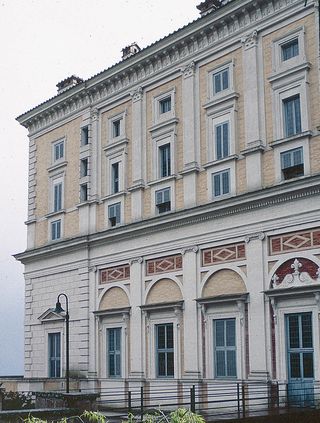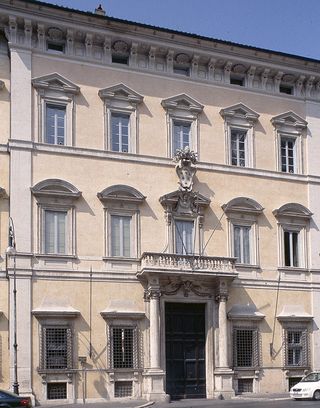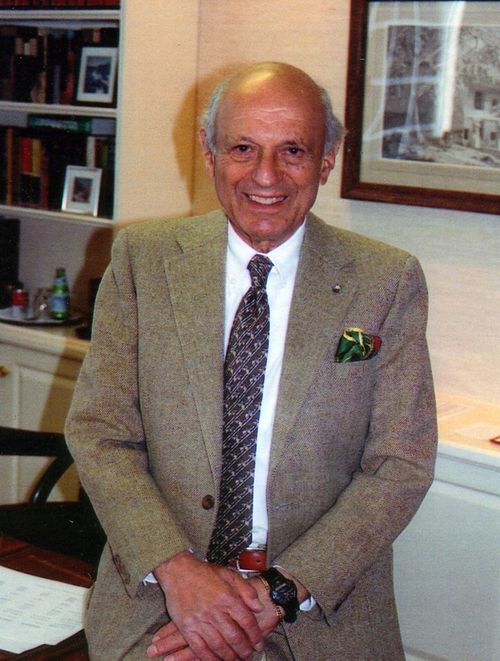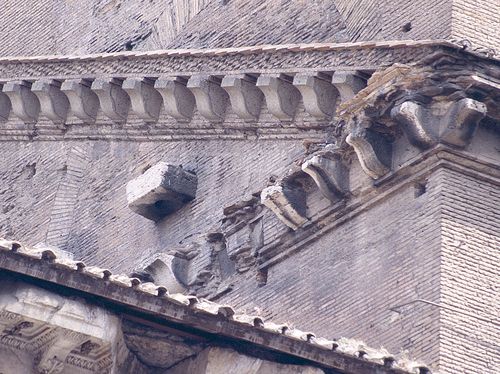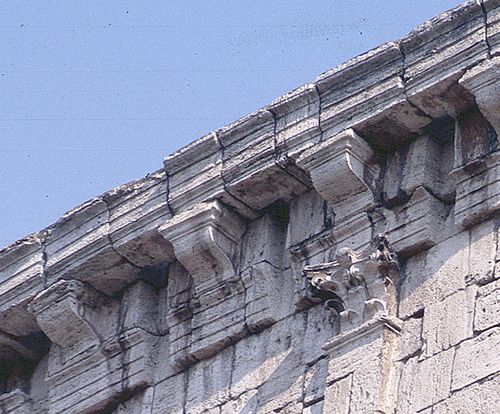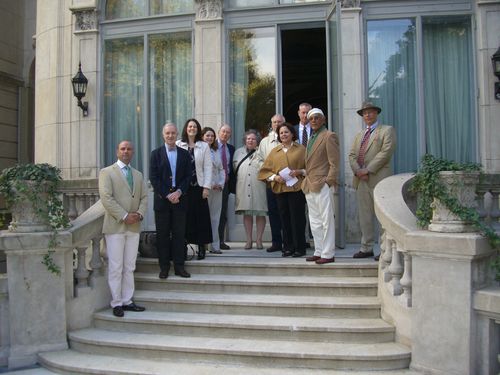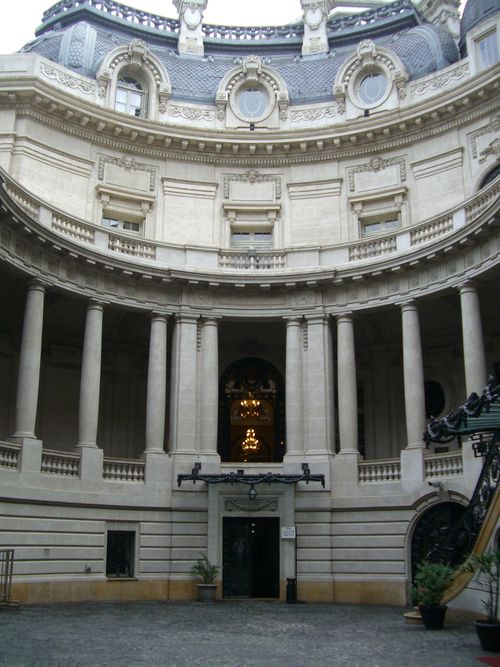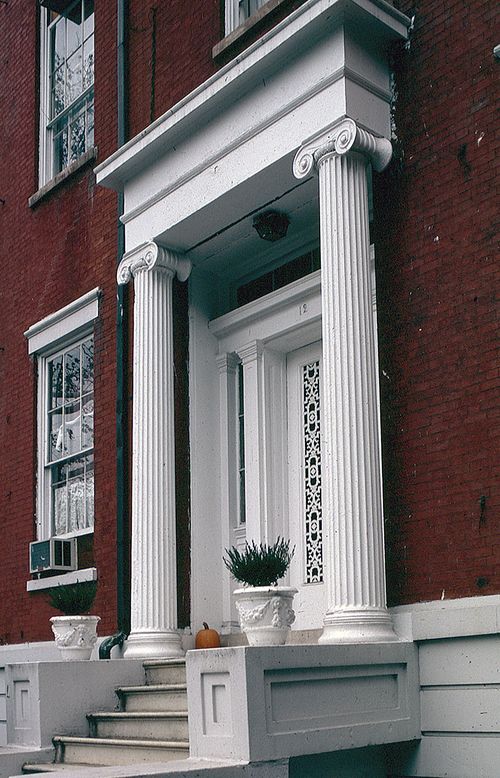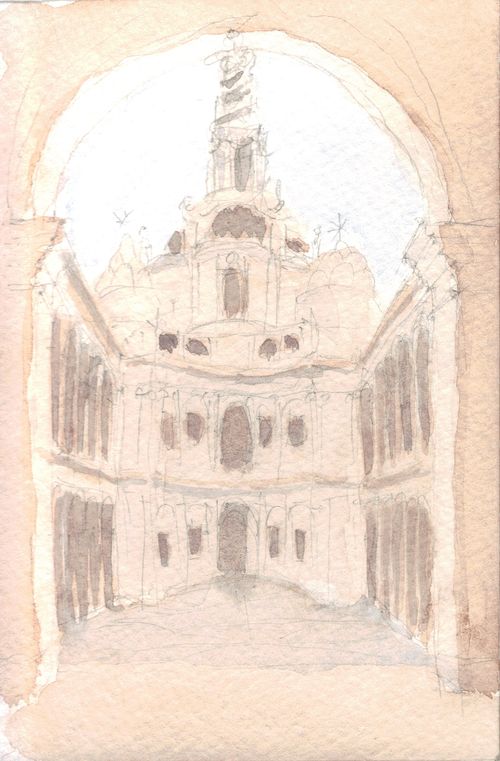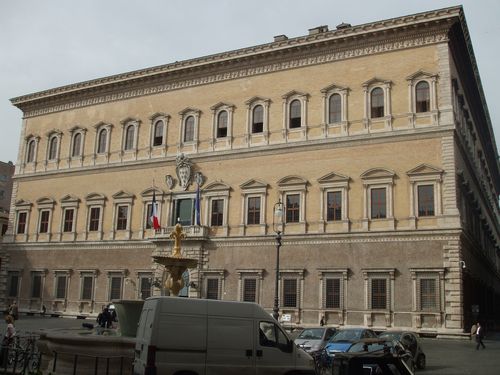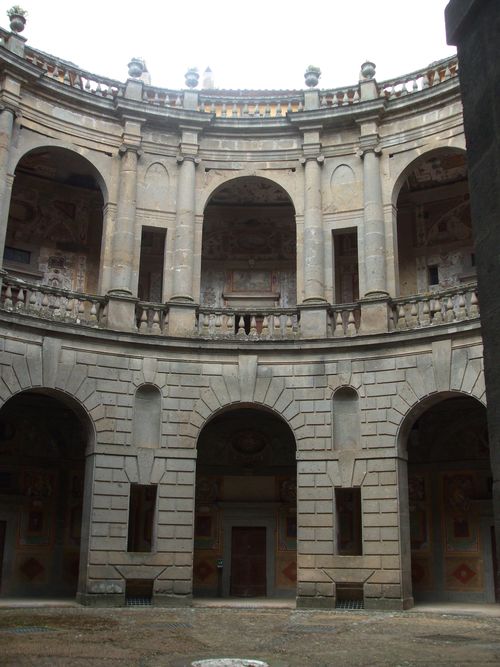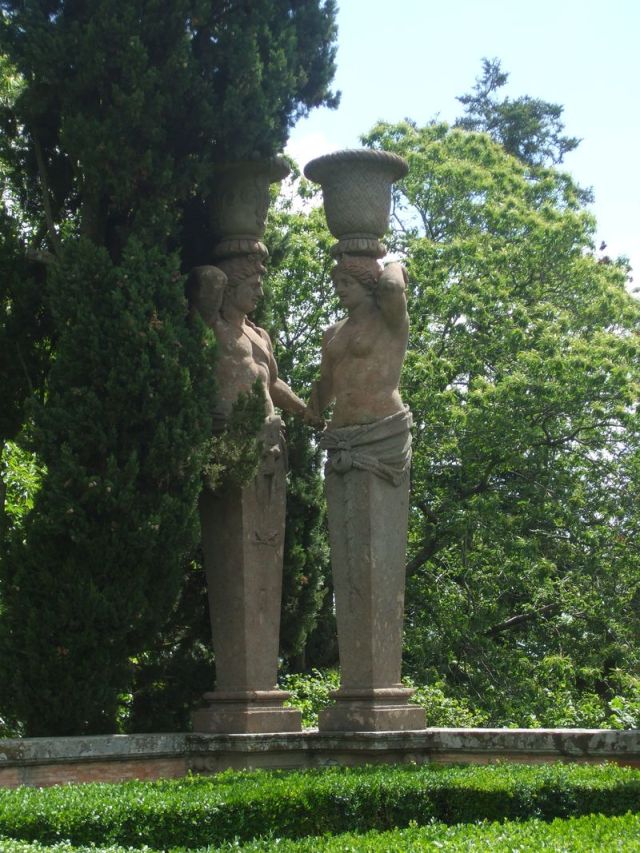by Calder Loth
Among the most influential of all treatises on classical architecture is Giacomo Barozzi da Vignola’s Canon of the Five Orders of Architecture (1562). The work is primarily a manual for drawing and applying each of the orders. It illustrates no designs with the exception of the last plate—Plate 32, a design for a cornice. The design incorporates what is essentially a Corinthian cornice using standard scrolled modillions enriched with acanthus leaves. However, below each modillion is an elongated console occupying a tall frieze area somewhat resembling a Doric frieze of triglyphs and metopes. (Fig. 1) This makes for a building crown with strong vertical emphasis. Vignola’s text for the plate states the following: I have used this cornice successfully in my work on the upper part of façades. Although it is my invention, I do not find it inappropriate to place it at the end of this work for those who want to use it. The height of the façade should be divided into 11 parts, 1 of which should be assigned to the cornice and the remaining 10 to the façade.
Vignola thus is offering a cornice weighty enough to cap a very tall building, a design known to us as the ‘bracketed cornice.’ It would be difficult to name a single plate in any architectural treatise having more widespread influence than Vignola’s Plate 32. Thousands of cornices throughout the Western World owe their appearance directly or indirectly to this illustration of Vignola’s ‘invention.’ One of the earliest uses of the cornice is found on Vignola’s own work: the Villa Farnese at Caparola, completed ca. 1575. (Fig. 2) The bracketed cornice topping this huge pentagonal structure has to carry not only the building’s upper order but also the entire towering façade. A standard entablature proportioned to the villa’s uppermost pilasters would be too weak. Numerous Italian Renaissance palaces employing bracketed cornices soon appeared. Typical of many is Antonio de Rossi’s Palazzo Altieri in Rome, begun in 1650, its façade given prominence by the Vignola-style cornice. (Fig. 3)
The use of the bracketed cornice underwent an extensive resurgence in mid-19th-century America with the popularization of the Italian Renaissance image or Italianate style for commercial and residential buildings. The Italianate style was a convenient means for introducing patrician elegance to façades in the cities and towns of the expanding young nation. We see dignified examples of this phenomenon in Philadelphia’s mid-19th-century bank buildings, lending a flavor of Renaissance Venice to Chestnut Street. (Fig. 4 ) Many such facades could be produced quickly and cheaply using cast-iron elements as on the 1869 Stearns Block in Virginia, the components of which were produced by Heyward, Bartlett, & Co. of Baltimore. (Fig. 5) Nearly every one of New York City’s Italianate-style brownstones boasts a bracketed cornice. A relatively late but classic example of a Vignola-type bracketed cornice tops the 1920 Ziegler mansion by Sterner & Wolfe on 63rd Street, now the New York Academy of Sciences (Fig. 6)
The introduction of steam-powered industrial saws in the 1840s made possible an extraordinary variety of wooden brackets for Italianate-style structures. The page of brackets shown in the 1870s catalogue of the J. J. Montague Woodworking Co. of Richmond, Virginia is a tiny sample of the range of brackets commercially available for decorating one’s home or shop. (Fig. 7) The mid-19th-century country house near Odessa, Delaware illustrates how the use of a bold bracketed cornice could transform an American family home into an Italian palazzo. (Fig. 8 ) Indeed, no matter how humble, a bracketed cornice could link even a 19th-century working-class dwelling to the glories of the Italian Renaissance. (Fig .9)
We might think that the bracketed cornice has been played out: all that can be said with it has been said. Nevertheless, it is encouraging to see a new interpretation Vignola’s invention, in of all places downtown Moscow. There the imaginative architect, Ilya Utkin, has inspired us with his elegant Dvoryanskoye Gnezdo (A Nest of Gentryfolk), a luxury apartment house completed in 2004 and sporting a bold version of the bracket cornice. (Fig. 10)


